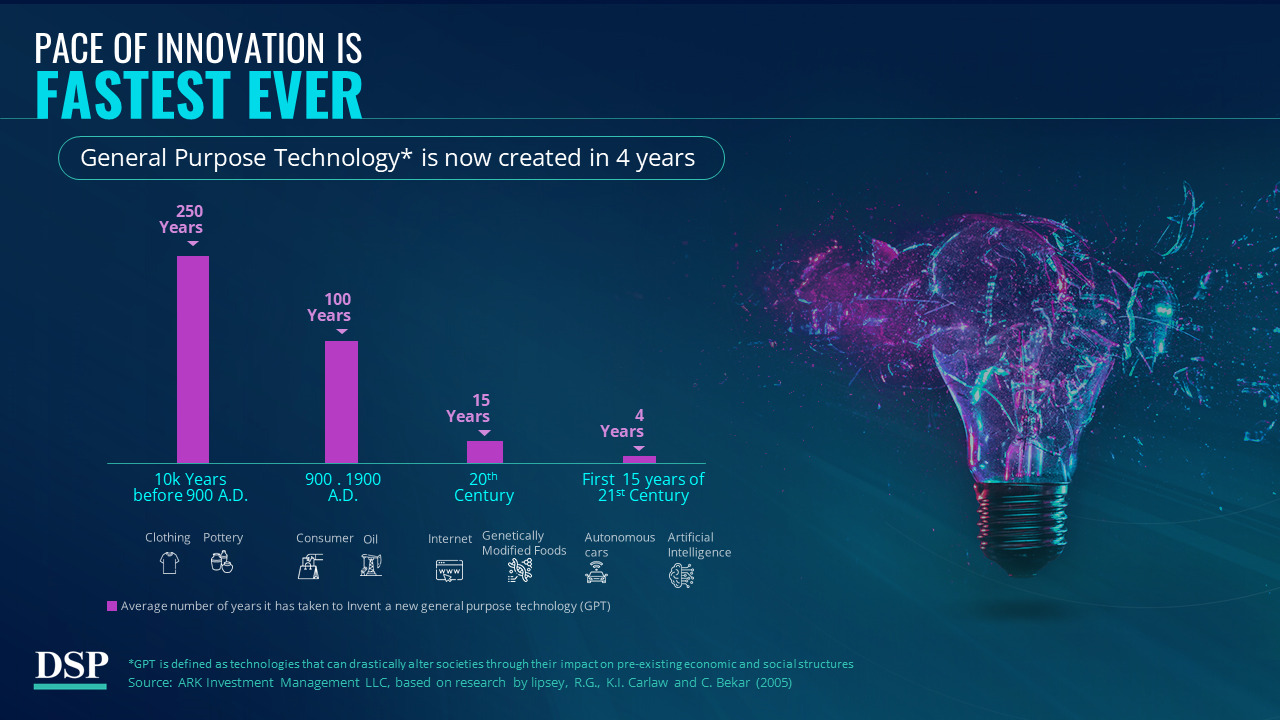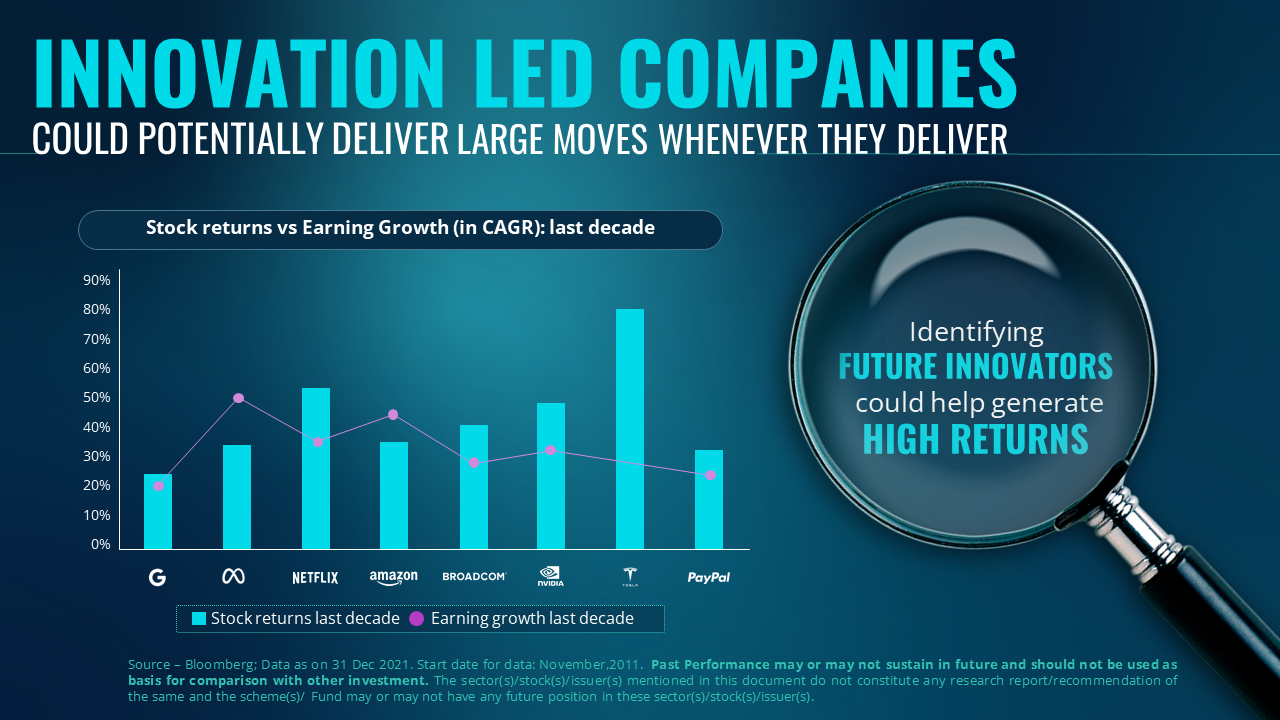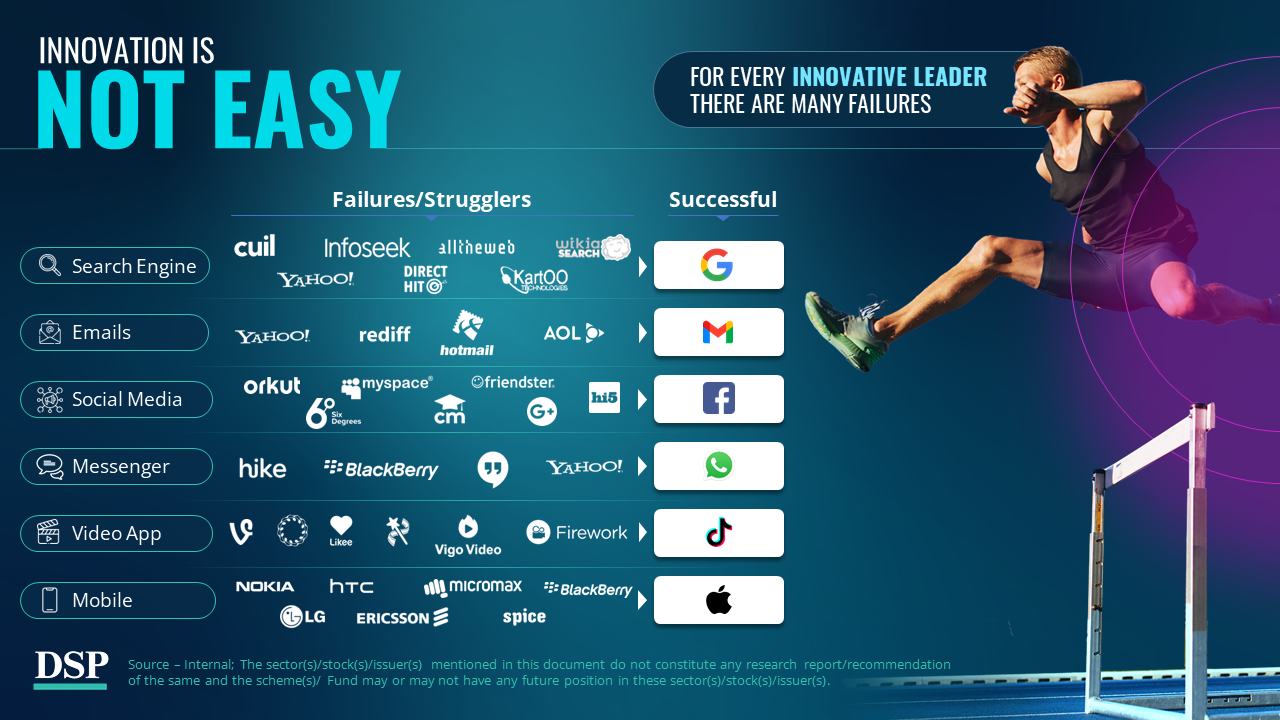

Market leaders who have already made it big- we use their devices, technologies or apps.
Challengers pioneering radical technologies that can change the way the world operates.
The facilitators that form the backbones so the Dominators & Disruptors can do what they do.






SEBI has set an industry-level limit of $7 BN for Mutual Funds (MFs) to invest in overseas securities & MFs & a limit of $1 billion for investment in overseas Exchange Traded Funds (ETFs). While the overseas ETF limit is still some distance away, the $7 BN limit for investments in overseas securities/MFs could get exhausted soon. Hence, on 23rd Jan 2022, SEBI advised us that DSP Global Innovation Fund of Fund (DSPGIF) should invest only in overseas ETFs until the overall limit of $7BN is raised. Therefore, DSPGIF will begin by investing 50% each into the iShares PHLX Semiconductor ETF and iShares NASDAQ 100 UCITS ETF. Eventually, the portfolio will aim to reflect our original design once the $7BN limit is enhanced. Please note this change, before you invest.


Investing in a theme like this has high risks of companies failing and of large & frequent drawdowns, due to the volatile nature of this space.
While the product design addresses the risk of companies failing by investing in a large number of stocks across sectors, one additional way of reducing risk while taking advantage of these drawdowns is by investing via the SIP route. Watch this video for more.
Additional information you may find helpful.



Please fill in your PAN and Date of Birth
These details help us keep your money safe. Your personal details will never be shared with anyone.
Enter the OTP
You should have got this on your registered mobile and
This step helps us be doubly sure that we're talking to ‘the right you' :)
Please fill in your PAN and Date of Birth
These details help us keep your money safe. Your personal details will never be shared with anyone.